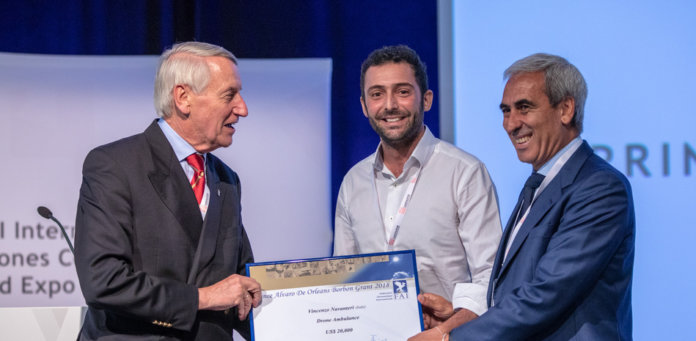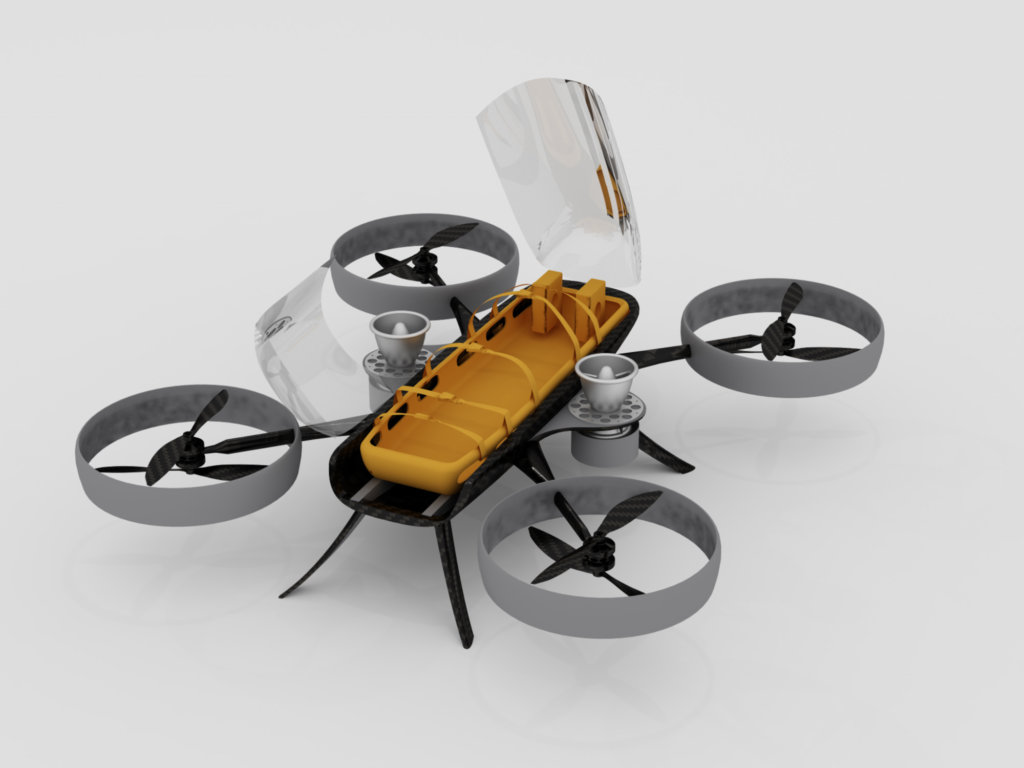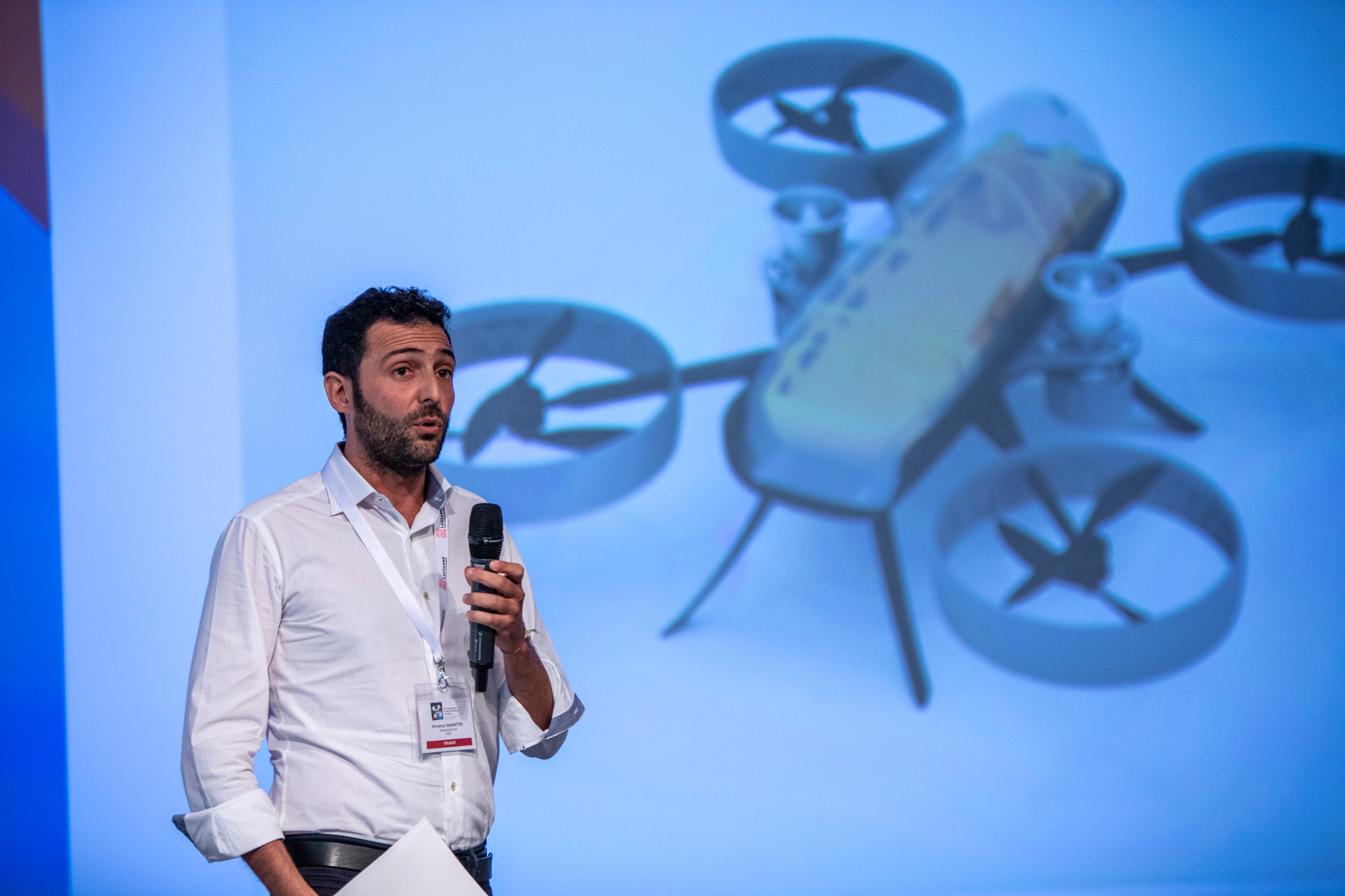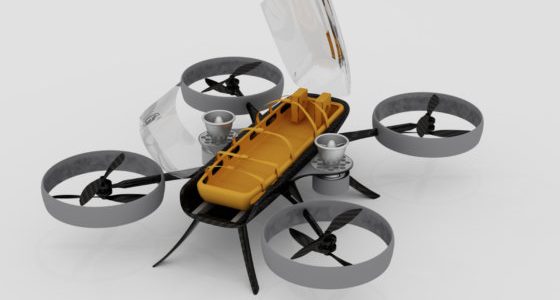
He won the grant to help him and his team develop their idea of a self-piloting drone ambulance that could carry a single person for up to 150km at 110km/h.

Collecting the award Navanteri, said: “It is a pleasure to receive this grant, and to use it for development. As a company it is what we need. And, more than my own business, it will support the general development of this type of technology.”
The award was given to Navanteri for his idea for a drone ambulance for emergency rescue. Navanteri, an engineer, developed the idea of an autonomous “aero ambulance” that could quickly and easily evacuate a single person.
Design highlights include:
- Autonomous (self-piloting) in flight
- 150km range
- Maximum speed of 110km/h
- Maximum altitude 1,000m
- Carries up to 120kg
- Destination set by GPS coordinates
- 8 electric-driven propellers
- Backup batteries
- On-board cameras and communications system
- Onboard oxygen supply and medical monitoring

Navanteri imagined a single-person drone that could carry an injured person out of harm’s way in all weathers. “The drone is intended mainly for rescue and first-aid missions,” he explained. For example, “urgent interventions in remote villages, or where access is temporarily difficult.”
The drone would be able to used by trained non-pilot staff, for example doctors or first-responders in an emergency situation. The power to drive the battery-driven propellers would come from two gas-driven micro-turbines, each with its own high-speed generator and independent gas storage.
Navanteri said: “This revolutionary blade-less and highly efficient micro-turbine technology is patented by us and is key to the long range of the drone.”
As well as the evacuation of people, the drone could be used to transport emergency equipment, medicines or even emergency foodstuffs. “Anywhere affected by any type of disaster – earthquakes, floods, even nuclear contamination zones.”
Navanteri said: “The core of our business is the turbine that creates the electricity to power the drone. So I am happy because it means people actually understand that our technology will help move drones forward, away from simple 20-minute battery life. I am very happy because it means people understand what we are doing.
He added: “I didn’t expect to win this award. I have never entered this type of competition – I was lucky and we won!”
Presenting the award with Raffaele Chiulli from ARISF, FAI President Frits Brink said: “We are extremely happy to present this award for such an innovative project. The potential for drones to do good is great, and ideas like this single-person drone ambulance show the potential. The technology underpinning this idea is real – a drone ambulance used in search and rescue is not simply a good idea, it is a realistic one too.”
The Prince Alvaro de Orleans-Borbon Grant is awarded each year is for people or institutions involved in the creation or promotion of technical developments and innovation in sport aviation.
The theme for the 2018 award was Drones for Humanity. Special consideration was given to projects that focused on remotely piloted aircraft, particularly those dedicate to humanitarian or search-and-rescue projects.
The $20,000 grant was presented to the winner at the 2018 FAI International Drones Conference and Expo, held at the EPFL Rolex Learning Centre in Lausanne, Switzerland on Saturday 1 September.



















